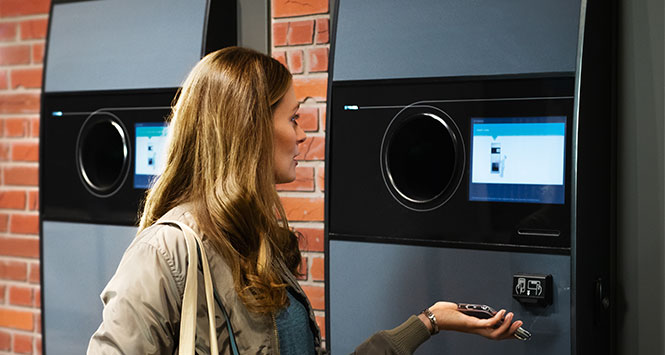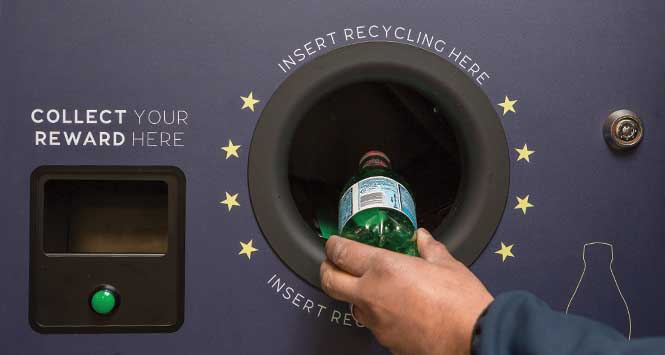Scotland’s deposit return scheme (DRS) will go live from 1 March 2024, revolutionising how Scotland recycles.
The DRS aims to capture at least 90% of all containers included in the scheme for recycling, marking an environmental milestone in Scotland’s journey to a circular economy and greener place to live for generations to come.
Circularity Scotland was set up by industry to run the DRS on its behalf. This means managing the financial and logistical elements of the scheme, collecting containers from return points, reimbursing deposits, and ensuring all materials are recycled.
Introducing a scheme of this scale that requires businesses to change the way they operate understandably brings with it a lot of questions and misconceptions. We have brought some of these together with answers to help provide clarity to businesses, and help them properly prepare for the part they will play in Scotland’s DRS.
Every retailer selling drinks in single-use drinks containers must act as a return point
Under the DRS regulations, any business that sells drinks in single-use drinks containers must act as a return point – but they can apply for an exemption. Last year, the Scottish Government published guidance to streamline the exemption process, meaning many smaller retailers are now able to opt out of acting as a return point. Applications for exemptions should be submitted to Zero Waste Scotland. Visit zerowastescotland.org.uk for more information.
I must install a reverse vending machine (RVM)
Whether or not you install an RVM is for individual retailers to decide. Generally, a reverse vending machine only makes economic sense if you are handling a large volume of returns – thousands per week. If in doubt about whether an RVM is right for you, we advise you to act as a manual return point in the first instance until you have a clearer idea on the volume of returns you will be handling.
The return handling fee (RHF) is too small, penalising smaller retailers
The RHF is the highest of any similar scheme in the world, and in January elements were increased by a further 19%. The RHF model was developed in close collaboration with independent advisors using data from retailers across Scotland, as well as input from other deposit return schemes operating across the world, and utilises data submitted by many retailers, manufacturers and trade associations.
For smaller producers in particular, having to pay a sign-up fee for every product is unaffordable
There is only one producer fee and this is a one-off payment. The registration fee is £365, and this has been set by SEPA and the Scottish Government. The fee has been waived for producers with an annual turnover of £85,000 or lower, or those producers that only fill and seal single-use drinks containers at the point of sale (e.g. crowlers).
Consumers can take back an empty can or bottle purchased outside of Scotland and still get 20p back
The DRS only covers drinks containers purchased in Scotland so you would not get 20p back on a bottle or can that was purchased anywhere else. This does not mean producers based outside Scotland, or those importing drinks into the country, won’t be able to sell their products in Scotland, they will just need to be registered as part of the scheme.
The DRS is not viable for isolated communities
The DRS must operate effectively in and for every community in Scotland at all times of the year. We understand the challenges of operating in more remote and hard-to-reach areas and are working with government, industry, and our official logistics provider Biffa to develop specific solutions for these areas. Data is currently being analysed to determine the most appropriate service levels and logistics solutions. Bear in mind that many remote communities already have shops and hospitality premises and rely on stock being brought in and waste taken out – DRS will be very similar to what is already happening.
Glass will ruin the scheme
Glass litter is one of the biggest polluters in Scotland and one of three main materials used to make single-use drinks containers, therefore the Scottish Government included it in the regulations. It’s estimated that the DRS will capture 504 million glass bottles each year, reducing CO2 emissions by more than 50,000 tonnes annually.
Businesses will be fined if DRS fails to go live on 1 March 2024
Only the very largest companies – those that produce more than 10 million units – are being asked to pay fees if there is any delay to the scheme, and these would amount to less than what they would pay if the scheme was live. Investment to build the required infrastructure has come from many sources, but since DRS is a producer’s responsibility to build and operate, it is only fair that producers take the risks associated with any unlikely delay. The vast majority of producers will not be liable in the event that the scheme is delayed.
Circularity Scotland does not underestimate the challenges involved when introducing a scheme of this scale. As the project grows in complexity and immediacy, businesses are understandably questioning their responsibilities. We are working at pace with businesses, large and small, in every corner of the country to help them prepare for the scheme, ensuring the DRS operates effectively.
We’ve already been able to reduce producer fees by up to 40%, while still providing the highest return handling fee anywhere in the world. We’ve also just announced further measures to help smaller producers, who we know have been concerned about the cashflow impacts of the scheme. To address these concerns, we have introduced a £22m package of measures, which will provide two-month credit terms and remove the day one and month one charges for most producers.
Any business with questions about their obligations under Scotland’s Deposit Return Scheme should contact Circularity Scotland’s customer service team on 0141 401 0899 or via the contact form on the circularityscotland.com website.







